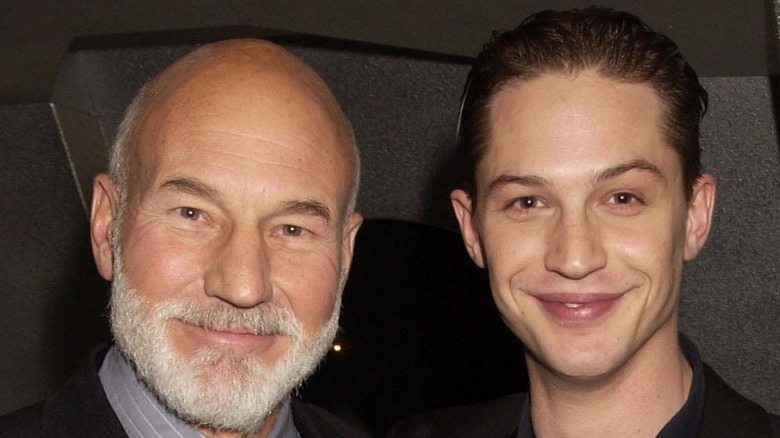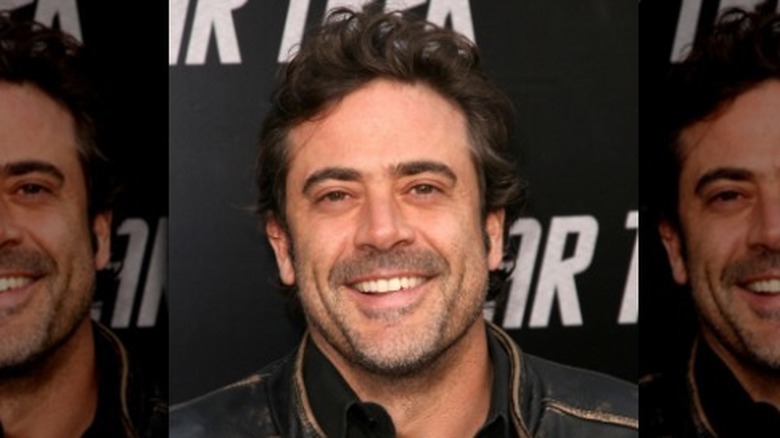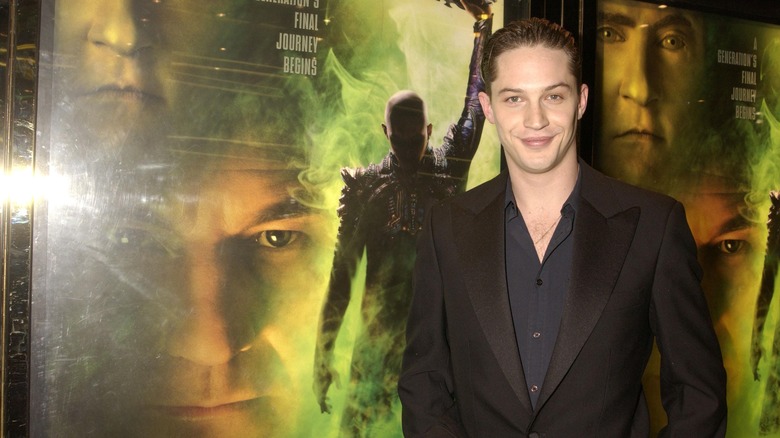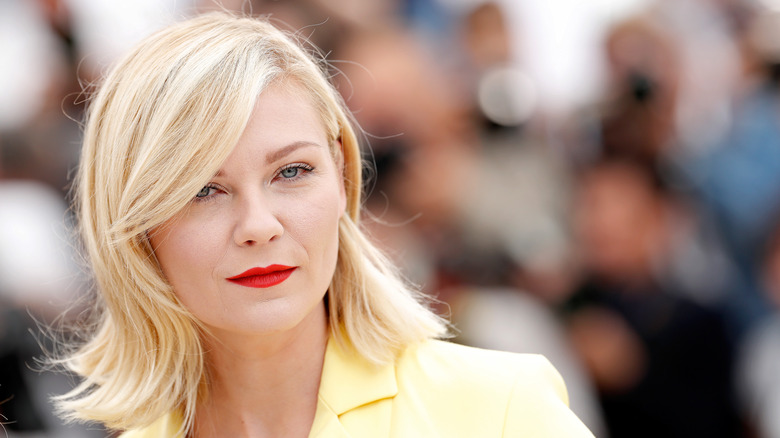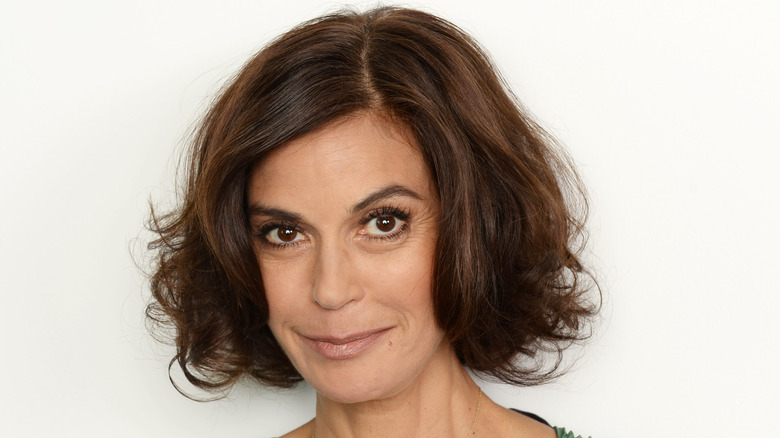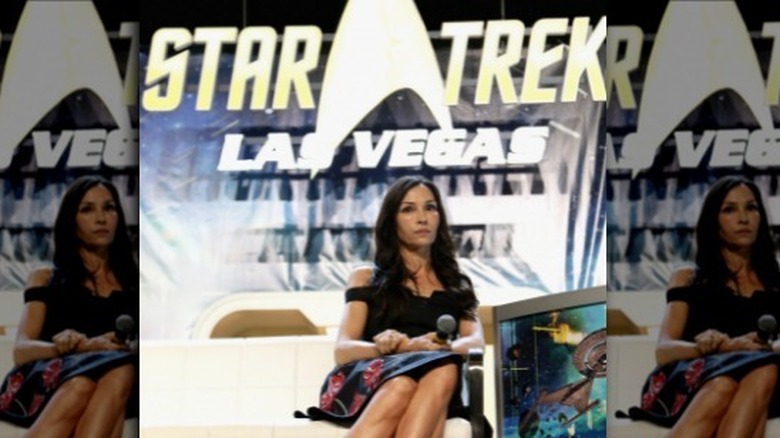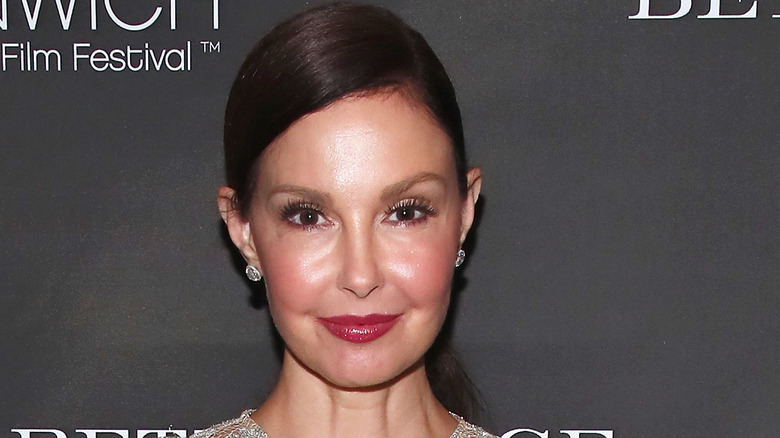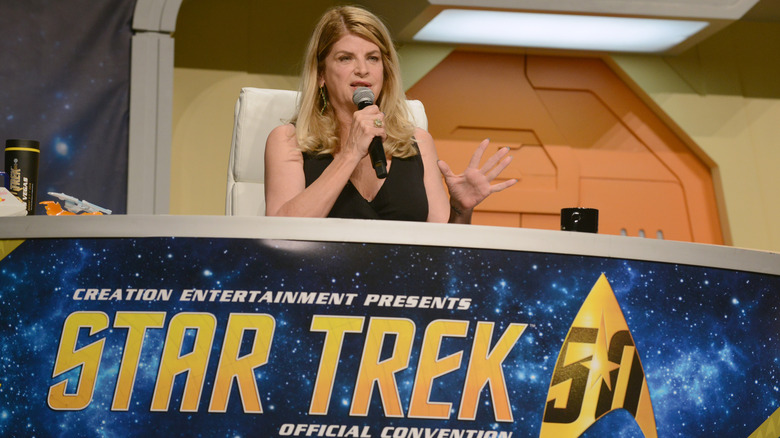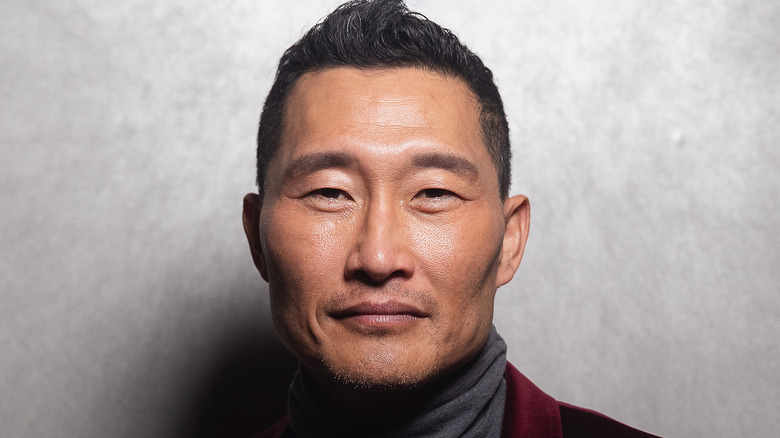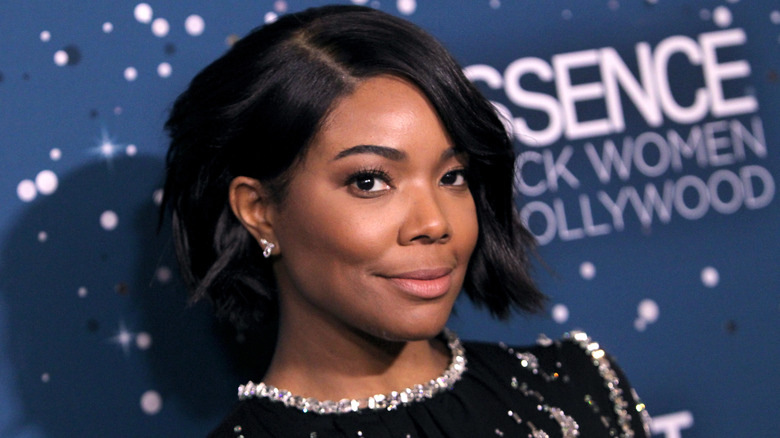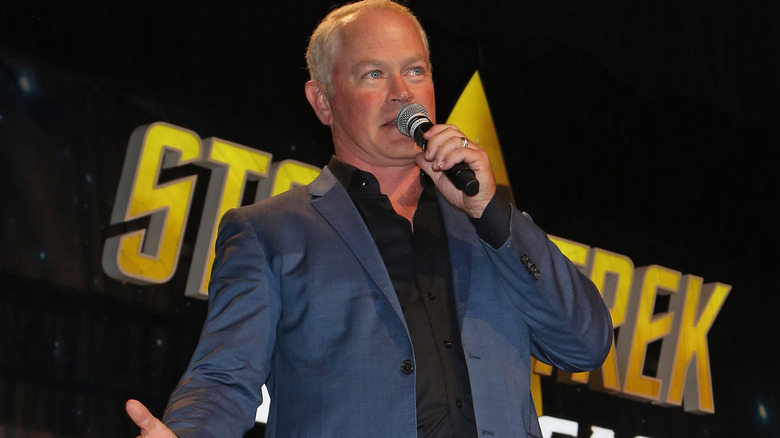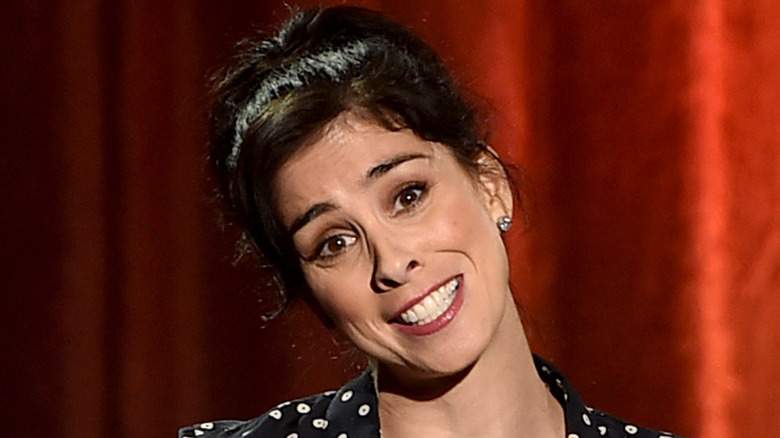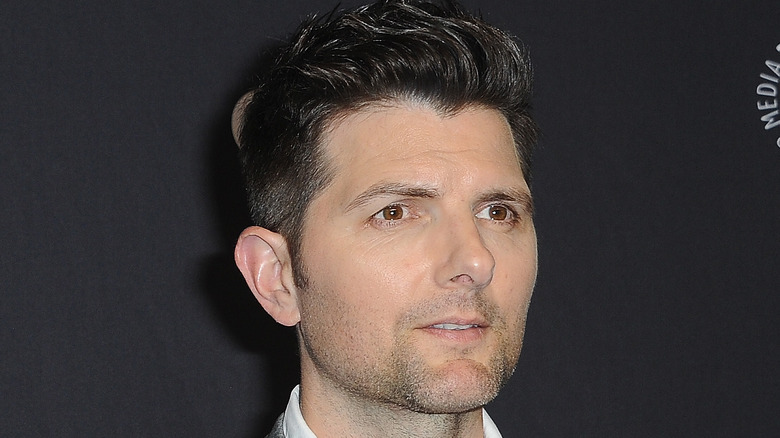Celebs Who Appeared In Star Trek Before They Were Famous
We may receive a commission on purchases made from links.
"Star Trek" has been around for so long it's like the background radiation of the universe: you know it's there but you don't often think about it. For more than five decades, the concept that creator Gene Rodenberry pitched as a "wagon train to the stars" (via Newsweek) has spread to every medium — film, television, literature, animation — and even the music from the shows has become embedded in pop culture. To date the world has enjoyed nine television shows, 13 films, and hundreds of novels detailing the adventures of the crew of the starship Enterprise and others.
All those thousands of hours of TV and film require a lot of actors, so it isn't surprising that just about everyone in Hollywood has shown up in an episode or film set in the "Star Trek" universe at some point. Many actors were already famous when they took on a high-profile role in a "Star Trek" production (like Christopher Plummer when he played General Chang in "Star Trek: The Undiscovered Country") or a cameo (like Christian Slater in the same film — a role he sought just because he was a huge fan, according to Digital Spy).
But plenty of folks appeared as citizens of The Federation, Klingon Empire, or elsewhere in the "Star Trek" universe way before they were household names. Here are some of the celebs who appeared in "Star Trek" before they were famous.
Jeffrey Dean Morgan
Today, Jeffrey Dean Morgan is best known as Negan on "The Walking Dead." The bat-toting character has gone through one of the most complex heel turns in modern fiction. Before that, he made a name for himself as the romantically doomed Denny Duquette on "Grey's Anatomy." It's safe to say that today Morgan is one of the most recognizable TV actors working today.
But back in 2003, Morgan was just a working actor with a few low-profile TV roles to his name. So when he landed the role of Damron, a Xindi-Reptillian scientist on "Star Trek: Enterprise" in its third season, he was happy for it — not because he was a huge fan of the show, but because he was desperate. According to Entertainment Weekly, he took the job because "I had to pay my bills."
The plot involved Damron and some co-conspirators traveling to Earth in 2004 to unleash a virus that would prevent humanity from becoming a force in the future. One reason you might not recognize Morgan in the role is the heavy makeup he was in, and that's also why the role made Morgan think about quitting acting altogether. People reports that the actor said the prosthetics were torture for him. "I remember them dripping goop on my face, and I had straws sticking out of my nose. I couldn't eat lunch. I was claustrophobic. I'd go home in tears." he admitted. Cinemablend notes that Morgan hasn't returned to "Star Trek" since, possibly because he couldn't be sure his character wouldn't wind up in heavy Borg prosthetics.
Tom Hardy
Tom Hardy is probably the most famous actor who appeared in the "Star Trek" universe before hitting it big. According to IMDB, his role as Shinzon in "Star Trek: Nemesis" in 2002 was just his sixth acting role ever, and the guy currently headlining in the Marvel Cinematic Universe was just 25 years old when he performed the role.
Shinzon is a clone of fan-favorite character Captain Jean-Luc Picard, originally created by the Romulans in a plot to replaced Picard. In "Nemesis," Shinzon seizes control of the Romulan Empire and plans to destroy Earth. On paper it's a great role for a young actor — who wouldn't want to be compared to the great Patrick Stewart? — but as noted by Polygon, "Star Trek: Nemesis" is one of the least successful and least popular of the films in the franchise. It was a failure at the box office, and according to Geeky Craze ended "Star Trek" film production until the reboot in 2009.
Over the years, however, Hardy's performance has been singled out as superior to the film around him. Nerdist notes that Hardy's screen test — performed with Stewart — shows just how talented and electric the actor is. Which might explain why, as reported by Heavy.com, there are persistent rumors that Paramount is actively trying to convince Hardy to reprise his role as Shinzon in "Star Trek: Picard."
Kirsten Dunst
You could be forgiven for thinking Dunst burst on the scene with her iconic role in "Interview with the Vampire" in 1994, when she was 12 years old. But CBR notes that Dunst began modeling when she was just 3 years old, and she had a handful of small roles before that legendary performance — including an appearance on "Star Trek: The Next Generation" in 1993. According to Variety, she played Hedril, a Cairn, a telepathic species with no spoken language. When her family boards the Enterprise on a diplomatic mission, she forms a strong bond with the empath Deanna Troi and her mother, Lwaxana.
What's really fascinating is how the "Star Trek" connection continues to be a subtle presence in Dunst's career. W Magazine reports that in 2017, Dunst made a blink-and-you'll-miss-it cameo appearance in the "USS Callister" episode of Netflix's "Black Mirror." The episode starred her husband, Jesse Plemmons, which somewhat explains her presence, but what's interesting is the plot of the episode. Plemmons' character is a put-upon loner who escapes into a virtual reality obviously based on "Star Trek," making Dunst's split-second moment surprisingly meaningful for a cameo.
Teri Hatcher
Today, Teri Hatcher is really famous, known for her starring roles in "Desperate Housewives" and"Lois & Clark: The New Adventures of Superman." But when she appeared as Lieutenant B.G. Robinson in the "Star Trek: The Next Generation" episode "The Outrageous Okona," she wasn't yet famous, although she also wasn't exactly a total unknown. She'd had recurring roles in TV shows including "The Love Boat" reboot, "Capitol," and "Karen's Song." The fact that you don't remember any of those shows tells you all you need to know Hatcher's level of fame when she made an appearance in "Star Trek."
You'd be forgiven for not knowing that Hatcher appears in the episode, because she's actually uncredited. Her role is pretty small, but it was supposed to be a lot bigger. According to Heavy.com, most of Hatcher's scenes in the episode were cut, which left her angry, so she requested that her name be removed from the episode.
The titular character from the episode, Okona (who was played by Billy Campbell), recently appeared in an episode of the animated series "Star Trek: Lower Decks," leading to speculation that Hatcher might someday be talked into reprising her role, perhaps to finally give the performance she thought she'd given back in 1988. For the moment, however, that remains pure speculation.
Famke Janssen
Famke Janssen, who would find fame as both a Bond Villain in "Goldeneye" and as Dr. Jean Grey (aka Dark Phoenix) in the X-Men universe landed just her second acting role in a 1992 episode of "Star Trek: The Next Generation."
Janssen played Kamala, a Kriosian empathic metamorph more or less engineered to attract and be a perfect mate to men. While being transported aboard the Enterprise, she falls in love with Captain Picard, which naturally complicates the diplomatic mission. The role was ideal for the former fashion model, as its predicated on her beauty and ability to be attractive to the opposite sex.
Doux Reviews notes that Janssen was impressive in the performance. She manages to somehow convey complexity and depth in a role essentially requires her to just be desirable. While the character is essentially a slave meant to spend her whole life serving a man emotionally and physically, Janssen nails the fact that Kamala at least makes a choice by the end of the episode. "Star Trek FAQ 2.0" reports that the producers were so impressed that they offered Janssen a lead role on "Star Trek: Deep Space Nine," but the actress turned them down.
Ashley Judd
While a number of uber-famous actors have appeared in various "Star Trek" shows and films, Ashley Judd has a very special place in the "Star Trek" universe. Her role as Ensign Robin Lefler on "Star Trek: The Next Generation" (which spanned two episodes in 1991) was her first-ever acting gig. Not only that, as CBR notes, her second appearance also gave the world Judd's first-ever on-screen kiss, with Wil Wheaton.
Judd's role is pretty small in her first episode, "Darmok." But, as reported by the Atlantic, that episode is considered one of the greatest stories in the history of the "Star Trek" franchise, which makes Judd a part of something special. Her role is expanded in her second episode, "The Game," in which she and Wheaton's character, Wesley Crusher, fall prey to an incredibly addictive video game. Unlike some of the famous actors who got their start on "Star Trek," Judd gets plenty of screen time.
Judd's role is iconic enough for US Weekly to describe her as a "Star Trek: The Next Generation alum," and her performance certainly didn't hurt her career. Just a few years later she had her breakout moment on the TV show "Sisters," and then started popping up in films like "Heat," "A Time to Kill," and "Double Jeopardy."
Kirstie Alley
Kirstie Alley's appearance as Lieutenant junior grade Saavik in "Star Trek: The Wrath of Khan" was just her second credited acting role. Screen Rant notes that Alley's performance was incredibly impressive. She managed to capture the Vulcan nature of the character without descending into a parody of Leonard Nimoy's iconic portrayal of Spock. As a result, her character was an immediate fan favorite, and the producers intended to bring her back for the next film, "Star Trek: The Search for Spock." According to the Chicago Tribune, the appreciation was mutual — Alley said "I owe everything to that film ... I was the happiest girl in the world because Nick (director Nicholas Meyer) gave me the biggest shot anyone could ever give an actress."
But when producers approached her to reprise the role, Heavy.com reports that they could no longer afford her. The role was recast with actress Robin Curtis, who played Saavik in "Spock" and briefly appears in fourth film, "Star Trek: The Voyage Home." The character didn't appear in the fifth film, "Star Trek: The Final Frontier." Reportedly, Meyer tried to get Alley to reprise her role for the sixth film, "Star Trek: The Undiscovered Country," but Alley was a huge star by that time and they definitely couldn't afford her. So producers dropped Saavik altogether and created a new Vulcan character, eventually played by Kim Cattrall.
Daniel Dae Kim
Daniel Daw Kim may be one of the most charming people on the planet, and that abundance of charm has made him a star. These days Kim is familiar from his roles in "Lost," "Hawaii Five-O," and the "Divergent" films (among dozens of other roles). But before Kim became a star, he appeared on two different "Star Trek" series in two different roles.
The first came in 2000, when he portrayed the Kelemane astronaut Gotana-Retz in the "Star Trek: Voyager" episode "Blink of An Eye." At this point in his career, Kim only had a handful of small roles to his name. A few years later he appeared on three episodes of "Star Trek: Enterprise" in the role of Corporal D. Chang. This was a pretty meaty role, and reflected the fact that Kim was making a name for himself in the industry — he was just a few years away from his career-making role on "Lost."
Kim, who has described himself as a lifelong fan of the show, told Asia Society that Star Trek was "big" for him because it was the first time he saw an Asian person on television, which must have made his casting an important moment for the actor. And he made his mark: Collider singles out Kim's performance as Gotana-Retz for praise, noting that "his character arc is remarkably memorable."
Gabrielle Union
These days, Gabrielle Union is a big deal. She's all over TV, she's been in huge films like "Bad Boys II" and "Bring it On," and she's written a bestselling memoir ("We're Going To Need More Wine"). Back in 1997, however, she was just getting started. That's when she landed one of her earliest roles, playing the Klingon officer N'Garen in the "Star Trek: Deep Space Nine" episode "Sons and Daughters."
The role was especially important to Union because she comes from a family of Trekkies. As reported by Interlochen, Union said "My mom is and was a massive Trekkie, so being a Klingon in my family was akin to winning the Oscars."
Union's character mocks and bullies Worf's half-Klingon, half-human son, Alexander, for his military incompetence. As reported by Heavy.com, Union noted that even though she was acting under layers of prosthetics, she was still "the mean girl of the squad." And those prosthetics took a long time to apply — she often had to work 19-hour days filming the episode, and she literally ran out of things to talk about with the makeup team. She also reported that when she wandered off set to take a break at a nearby coffee shop in full makeup, no one batted an eye because it was a regular occurrence.
Neal McDonough
Whether you know Neal McDonough from "Band of Brothers," "Captain America: The First Avenger," or "The Flash," chances are you think of him with his trademark so-blonde-its-white hair. But when he appeared as Lieutenant Hawk (he doesn't live long enough to get a first name) in the film "Star Trek: First Contact" in 1996, he appeared with a darker 'do.
Hawk was a great role for the up-and-coming star. The conn officer on the Enterprise, Hawk is a pretty heroic and capable officer right up until he's assimilated by the Borg and transformed into a murderous enemy. And, according to Empire, McDonough has been a fan of the franchise since he was a kid, making it something of a dream role for the actor.
CBR reports that Hawk was intended to be the first openly gay character in the "Star Trek" universe, but producers eventually vetoed the idea. In fact, according to Screen Rant in the earliest drafts of the script, Hawk was written to be explicitly gay, which would have been huge news back in 1996. McDonough has said that he was unaware of any such plans for the character. The rumor that Hawk was gay was finally confirmed in a 2001 novel, "Section 31: Rogue."
Sarah Silverman
Back in 1996, comedian Sarah Silverman wasn't a total unknown — she'd been a cast member on "Saturday Night Live," after all — but she was years away from achieving the iconic status she enjoys today. In her first scripted role, Silverman played Rain Robinson in the two-part episode "Future's End" in season three of "Star Trek: Voyager."
Robinson is a scientist who figures out that two Voyager crew members have actually traveled from the future, then assists them in setting things right. Silverman's performance is fondly remembered by Trekkies — Collider notes that Silverman "played the character with her quintessential wry humor and sarcasm" and praises the "easy chemistry" she had with co-star Duncan McNeill. The episodes are ranked third on Den of Geek's list of "Star Trek" stories set in the present day.
Silverman vibed so well with the cast and crew, in fact, that here was serious consideration given to adjusting the end of the episode so her character could remain on board "Voyager" as a regular cast member in season four (via Slice of SciFi). Instead, "Voyager" made history in a different way, adding Jeri Ryan in a skintight catsuit as the iconic Seven of Nine.
Adam Scott
Considering that Adam Scott's usual on-screen persona is pretty nerdy (he's closely associated with that nerdiest of fictional games, Cones of Dunshire, after all) it really shouldn't be too surprising that Scott brought his Hot Nerd Energy to the "Star Trek" universe.
Scott had only been acting for a few years when he was cast as the unnamed conn officer on the starship Defiant (aka "helmsman 3," which gives you an idea of how small this role was, but at least he got some lines). H&I reports that it was Scott's fourth film role ever, and that he'd originally auditioned for the slightly larger role of Lieutenant Hawk, which went to another up-and-coming actor, Neal McDonough. The Back Row explains what makes Scott's small role so interesting: he's basically the biggest star to (almost) be one of Trek's notorious "redshirts," the unnamed characters who are hilariously expendable while the gold- and blue-shirted main characters always survive.
Scott's "Star Trek" connection actually creates a mind-bending pop culture loop. As reported by IndieWire, when J.J. Abrams rebooted the franchise with 2009's "Star Trek," Scott's "Parks and Recreation" character delivered a hilarious rant concerning Abrams's decision to link Spock and Nyota Uhura romantically.
